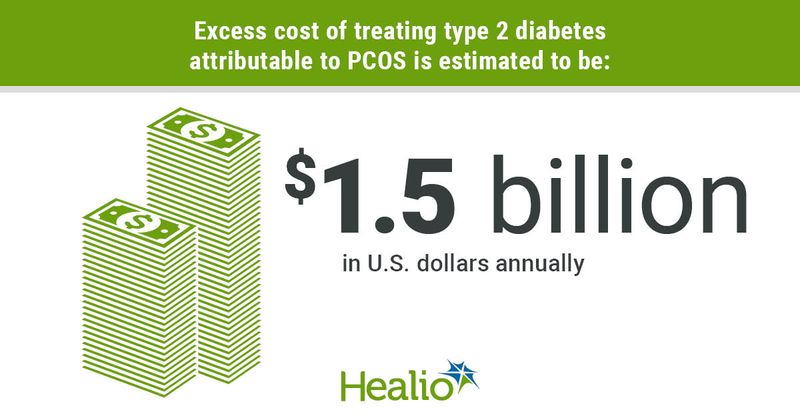PCOS-related health care costs approach $8 billion in US annually
The overall economic burden of treating polycystic ovary syndrome in the U.S. exceeds $7.9 billion annually, with almost half the cost attributed to treating the direct costs of stroke and type 2 diabetes.
In a meta-analysis of 29 published studies and review of medical treatment cost data, researchers found that the remaining half of the annual health care-related cost burden of PCOS was attributable to treating reproductive endocrine morbidities, such as menstrual dysfunction and infertility. The analysis expands on an earlier study that found that diagnosing and treating common reproductive complications related to PCOS cost an estimated $3.7 billion annually as of 2020.

“Although PCOS affects at least 1 in 7 women and leads to over $8 billion in health care costs annually in the United States alone, it is frequently misunderstood or overlooked by clinicians and policymakers,” Carrie Riestenberg, MD, a reproductive endocrinology and infertility fellow at the University of California Obstetrics and Gynecology, Los Angeles, said in a press release. “With a better understanding of how to diagnose and treat this common condition effectively, we may be able to reduce the economic burden as well as the impact on women’s quality of life.”
In a systematic review and meta-analysis, Riestenberg and colleagues analyzed data from 29 observational studies that examined risk for adverse pregnancy outcomes (defined as gestational diabetes, gestational hypertension and preeclampsia) or long-term health outcomes in women with PCOS compared with a control group, matched or controlled for BMI. For PCOS prevalence estimation, researchers used NIH diagnostic criteria of 6.6% for the purpose of economic burden calculations.
Cost data for medical treatment of the health outcomes of interest was obtained from the Medical Expenditure Panel Survey data from the Agency for Healthcare Research and Quality where possible, and otherwise from review of published literature of health care expense in the U.S. All costs were adjusted for inflation using the consumer price index.
The total economic burden estimated for PCOS, including the prior assessment, was estimated to be $8 billion in 2020 U.S. dollars. Of this cost, approximately 46% was attributed to the cost of treating reproductive endocrine morbidities, such as infertility, abnormal uterine bleeding, menstrual dysfunction and hirsutism.
Metabolic and vascular morbidities accounted for more than 48% of the economic burden of PCOS, with strokes accounting for 30% and type 2 diabetes accounting for 19% of all costs.
For type 2 diabetes alone, researchers estimated the excess cost attributable to PCOS was $1.5 billion (95% CI, 0.9-2.3) in 2020 U.S. dollars annually. The excess cost of stroke attributable to PCOS was $2.4 billion in 2020 U.S. dollars annually (95% CI, 0.9-4.5).
Pregnancy complications such as gestational diabetes, gestational hypertension and preeclampsia made up about 5% of the estimated costs.
“Our current meta-analysis and economic burden calculations estimates that the excess cost of pregnancy-related comorbidities (gestational hypertension, gestational diabetes and preeclampsia) attributable to PCOS is $375 million in 2020 U.S. dollars annually,” the researchers wrote. “The cost of treatment of gestational hypertension accounts for just under one-half of this cost, while preeclampsia accounts for one-third and gestational diabetes just 16%. Together, the cost of the pregnancy-related comorbidities account for just over 4% of the total economic burden of PCOS.”
The initial PCOS diagnostic process was less than 2% of the total cost burden.
“These data suggest that greater clinician vigilance and public awareness, combined with more liberal screening and early diagnosis, would be a cost-effective approach to ameliorating the economic, health and quality of life impact of PCOS,” the researchers wrote. “Additionally, our findings support the need for increased investment in PCOS research and education.”
The researchers noted that the analysis did not include increased risks for endometrial, breast and ovarian cancer and mental health disorders that women with PCOS face. Researchers excluded these conditions due to limited availability of data.

